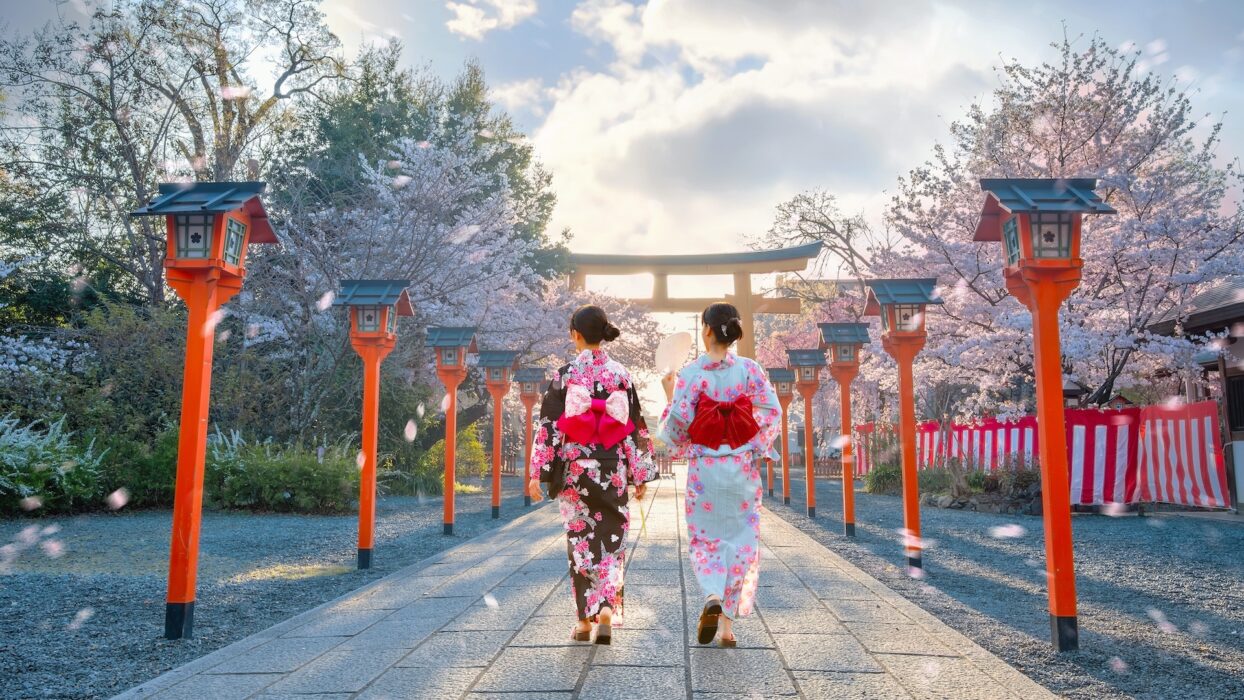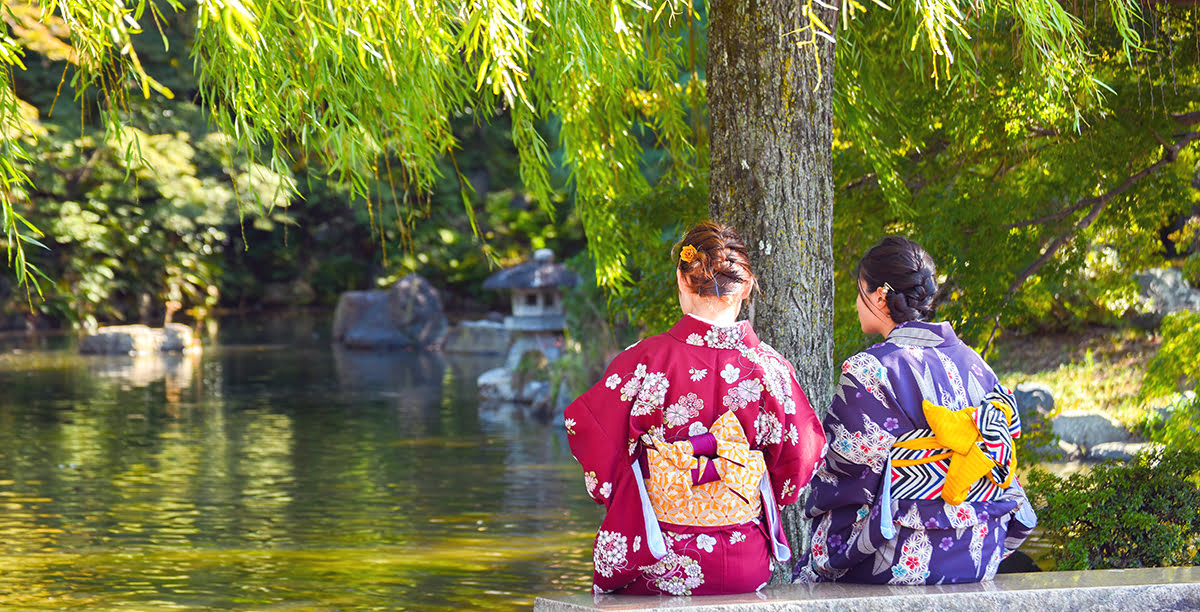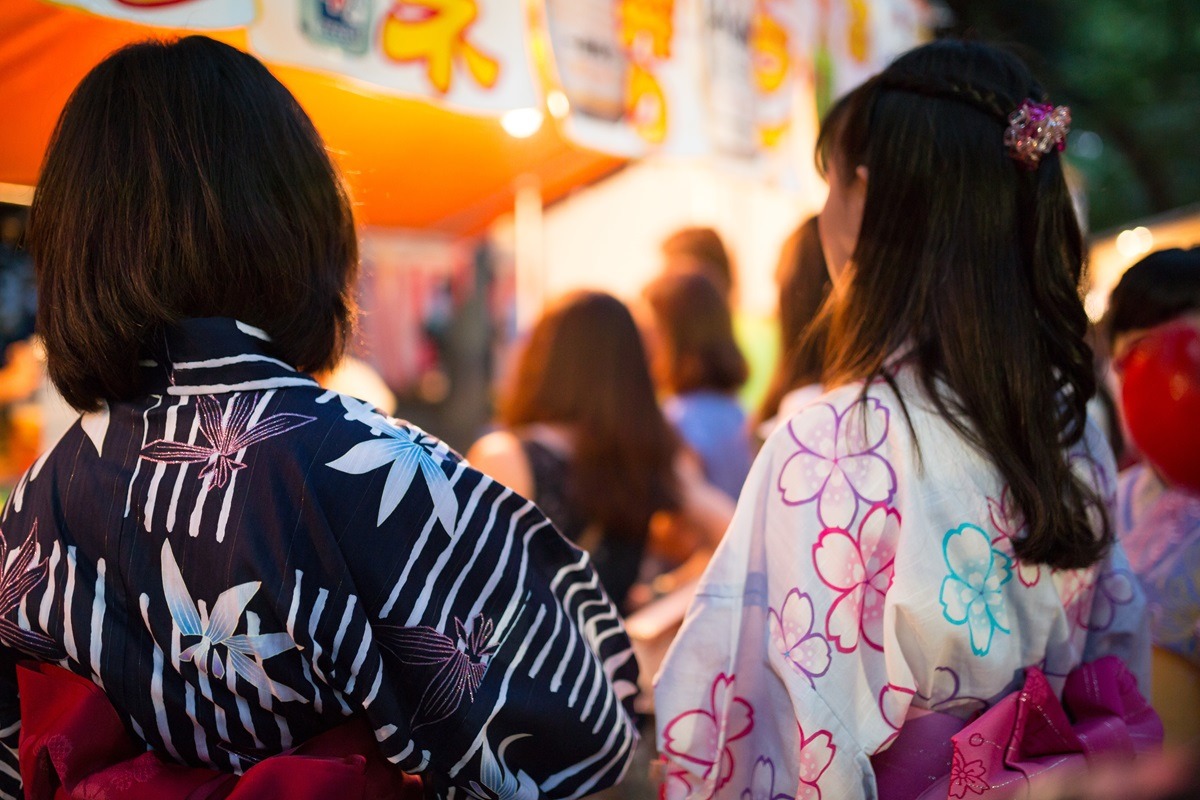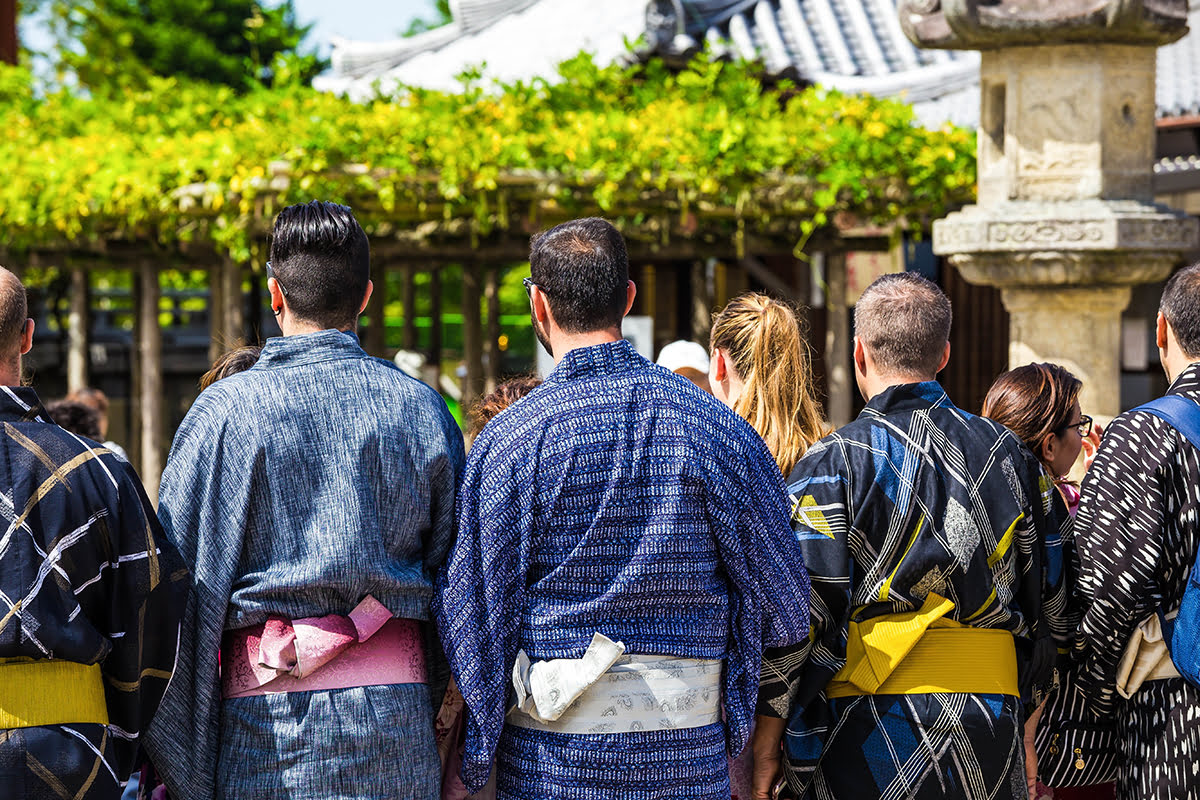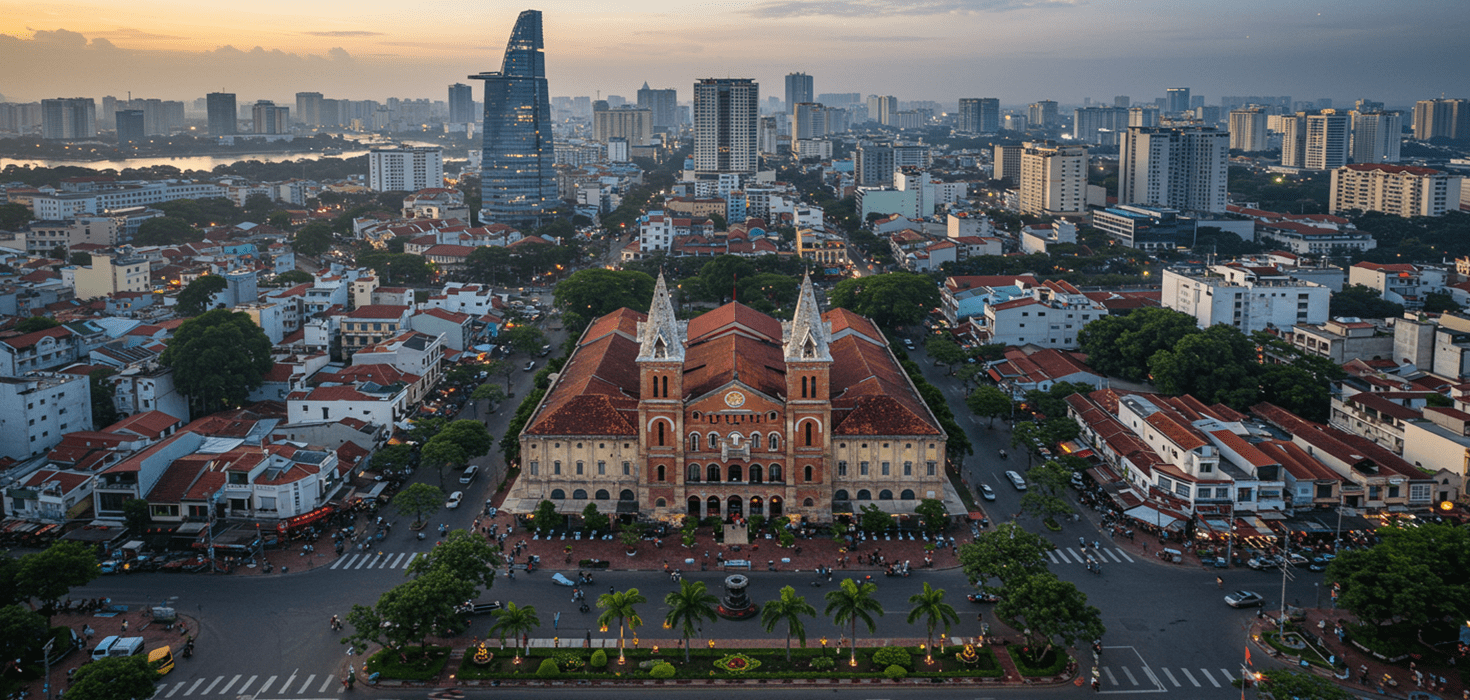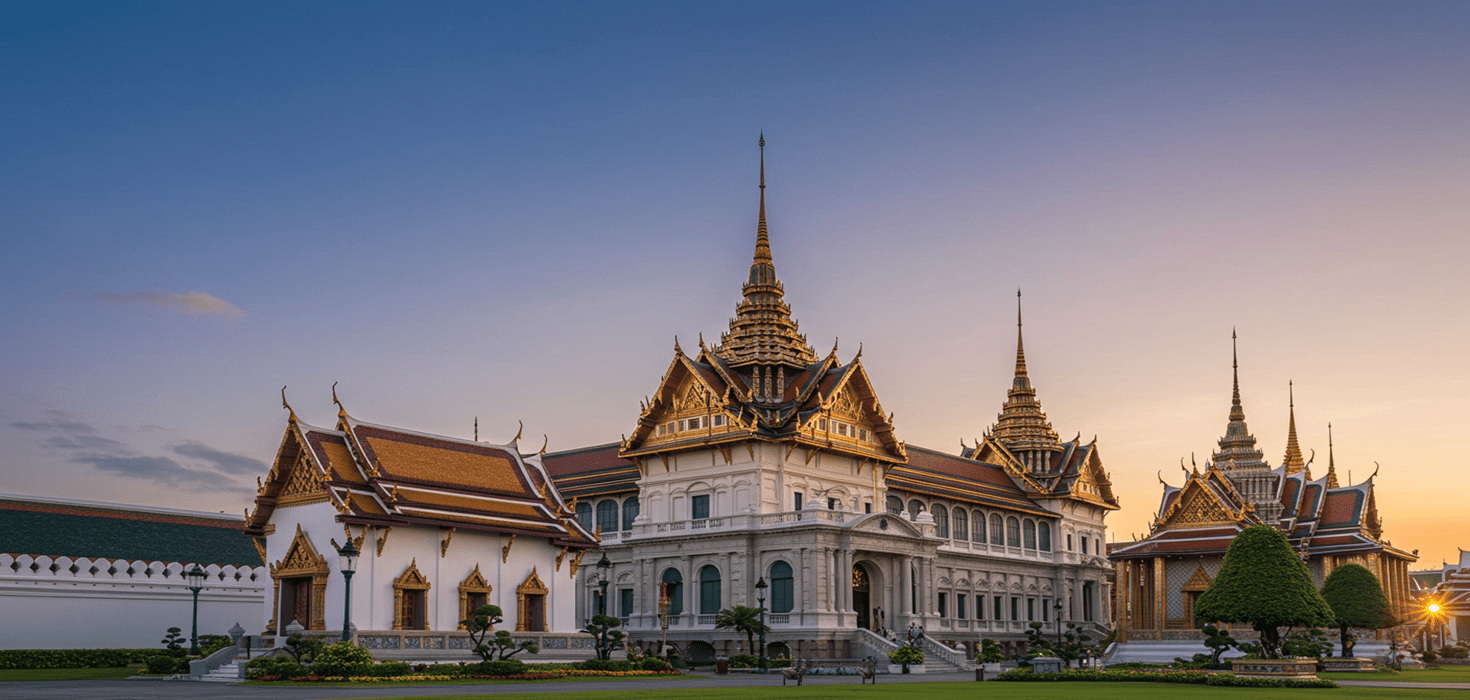Japan’s rich cultural tapestry is woven with numerous traditions, one of which is the beautifully simple yet elegant Yukata. This summer garment, made from light cotton fabric, allows wearers to experience traditional Japanese aesthetics during warmer months. From attending lively summer festivals to strolling through scenic onsen towns, wearing a Yukata offers an authentic immersion into Japanese culture.
The Essence of Yukata: Understanding Its Origins
The Yukata has a history dating back to the Heian period (794-1185), where it was originally used as a bathrobe by aristocrats. Over centuries, the Yukata evolved from a post-bath garment into a fashion staple for summer events, particularly during the Edo period (1603-1868). Today, Yukatas are synonymous with summer festivals, fireworks displays, and hot spring resorts.
The Difference Between Yukata and Kimono
While both Yukata and Kimono are traditional Japanese garments, they differ significantly in material, usage, and formality. A Kimono, typically made from silk, is a formal attire worn during significant ceremonies and celebrations. On the other hand, a Yukata is a casual garment crafted from cotton, making it perfect for the hot and humid summer months.
How to Wear a Yukata: Step-by-Step Guide
Donning a Yukata may seem intricate at first, but with a little practice, it becomes an enjoyable ritual. Here’s a basic guide to help you master the art of wearing a Yukata:
- Start by wearing the Yukata as you would a robe, ensuring that the left side wraps over the right side. This is crucial, as the opposite way is reserved for funerals.
- Hold the Yukata closed with one hand at your waist and use the other hand to smoothen out the fabric around your hips.
- Tie the obi (belt) around your waist, ensuring it’s snug but comfortable. The bow can be tied at the back, side, or front, depending on the style.
- Adjust the length and sleeves so everything looks neat and aligned.
Finding the Perfect Yukata: Shopping Tips
Finding a Yukata that suits your personal style and taste is an adventure in itself. Here are some tips to help you shop for the perfect Yukata:
- Know Your Fabric: Yukatas are typically made from cotton or cotton blends, offering comfort and breathability. Opt for a fabric that suits the climate you’ll be wearing it in.
- Choose Your Pattern: Traditional patterns often include floral designs, geometric shapes, and seasonal motifs. Pick a pattern that resonates with you.
- Consider the Color: Light and bright colors are popular for summer wear. Darker hues can be elegant and sophisticated.
- Accessorize: Enhance your Yukata with traditional accessories like obi belts, obi clips, and geta (wooden sandals).
Yukatas can be purchased at department stores, speciality kimono shops, and even online. For an unforgettable shopping experience, consider visiting traditional markets or shops in Kyoto or Asakusa in Tokyo.
Shopping Guide
Expand your Yukata collection or find the perfect gifts to bring home with a dedicated shopping guide:
- Kimono Shops: Kyoto and Tokyo both house numerous kimono and Yukata shops where you can find a variety of patterns and accessories.
- Department Stores: Japanese department stores such as Takashimaya and Mitsukoshi offer a wide range of Yukata and traditional clothing items.
- Local Markets: Explore local markets and traditional shopping streets like Nakamise-dori in Asakusa to discover unique Yukata apparel and souvenirs.
The Best Occasions to Wear a Yukata
Yukatas are most commonly worn during summer festivals, known as matsuris, as well as fireworks shows, or hanabi taikai. They are also prevalent in hot spring towns, where you’ll see visitors strolling in Yukata as part of their onsen experience. When walking through cities like Kyoto or attending events like the Gion Matsuri, wearing a Yukata enhances your cultural immersion.
Day-by-Day Itinerary for Experiencing Yukata in Japan
To make the most out of your Yukata experience in Japan, here’s a detailed 5-day itinerary:
Day 1: Arrival and Yukata Shopping
Arrive in Tokyo and settle into your accommodation. Spend the afternoon in Asakusa, where you can shop for your Yukata and accessories. In the evening, enjoy dinner at a traditional Izakaya.
Day 2: Onsen Experience in Hakone
Head to Hakone for a day of relaxation. Check into a Ryokan (traditional inn), where you’ll be provided with a Yukata to wear during your stay. Enjoy the hot springs and a Kaiseki (multi-course) dinner in your Yukata.
Day 3: Explore Kyoto in Yukata
Travel to Kyoto and change into your Yukata. Stroll through the historic Gion district, visit the iconic Kiyomizudera Temple, and enjoy tea at a traditional tea house. Capture beautiful photos in your Yukata against Kyoto’s scenic backdrop.
Day 4: Matsuri Festival in Osaka
Travel to Osaka and attend a summer festival. Wear your Yukata and immerse yourself in the festive atmosphere, participating in traditional games, enjoying street food, and watching the fireworks display.
Day 5: Cultural Immersion in Kanazawa
Visit Kanazawa and explore Kenrokuen Garden and the Nagamachi Samurai District. Enjoy a leisurely stroll in your Yukata and visit local artisan shops before returning to Tokyo in the evening.

